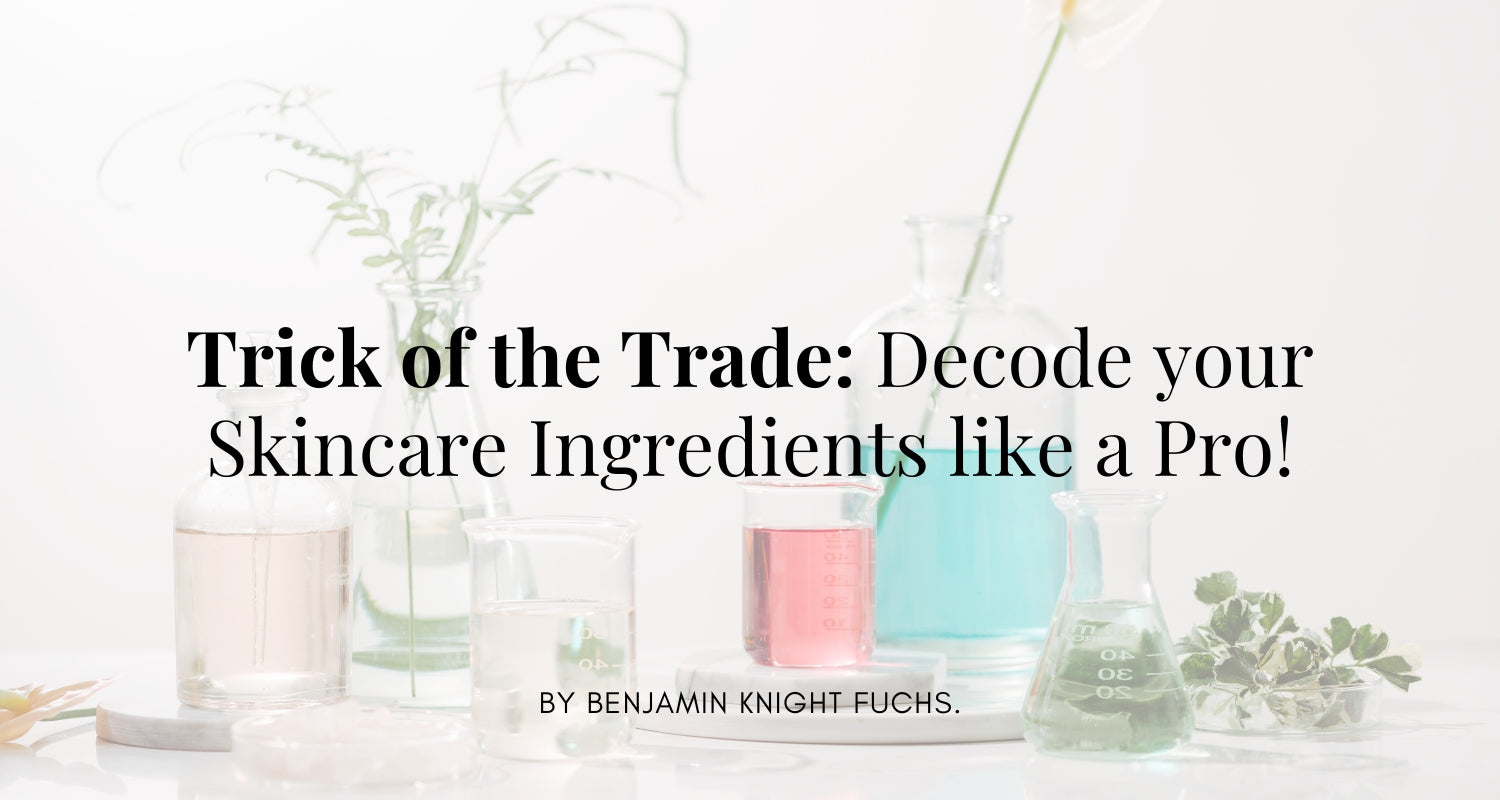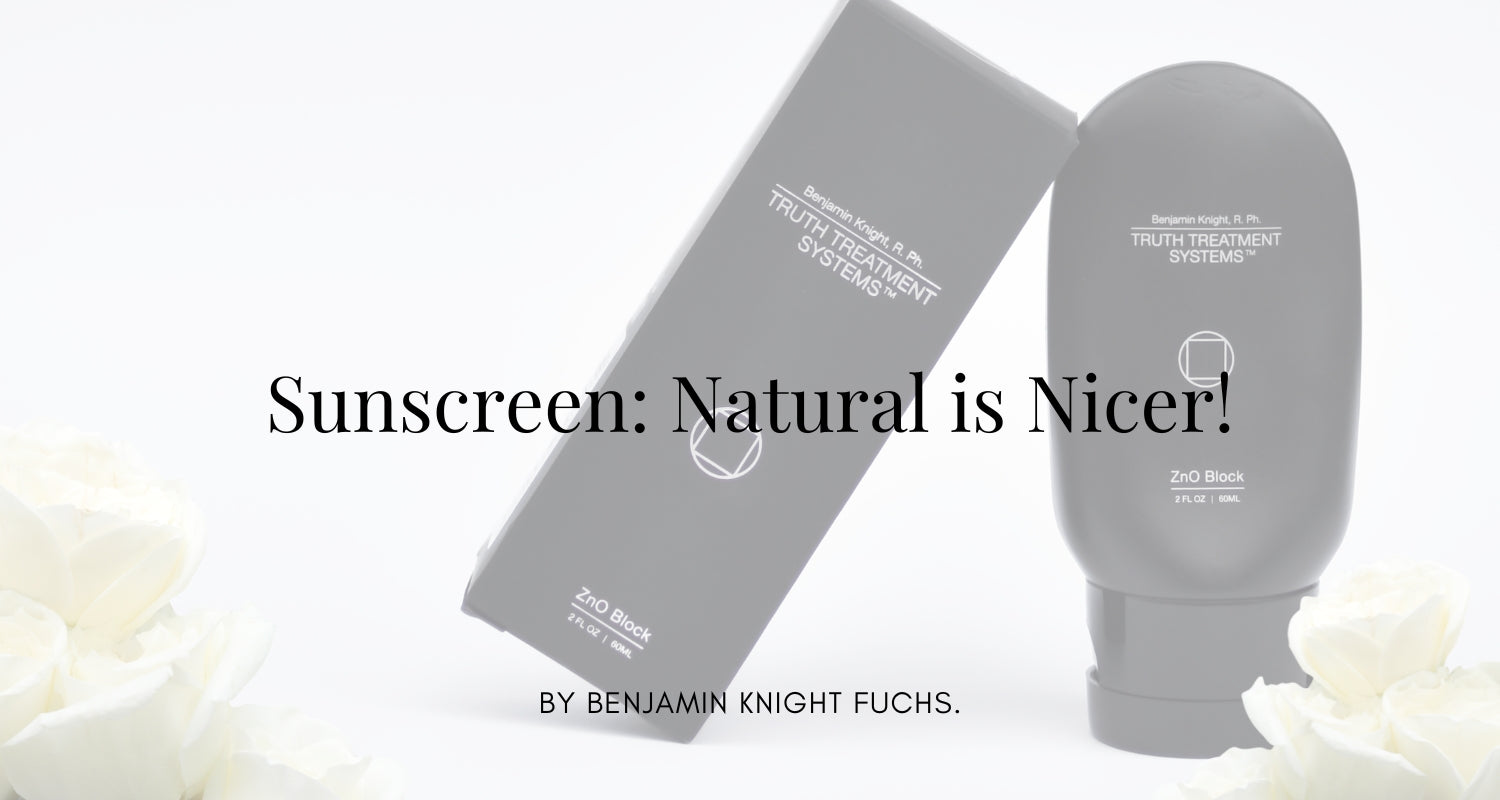
Trick of the Trade: Decode your Skincare Ingredients like a Pro!
Choosing skincare that will address your specific concerns and lifestyle can be a tricky business. With brands, forms, recommendations and endorsements knowing what product to buy can be an overwhelming experience. And because of the dizzying number of ingredients used, making a wise decision on what to buy and use on your skin can be a daunting challenge.
A typical skincare product can be formulated with 20-30 ingredients—most of which are unidentifiable much less pronounceable--and sometimes products contain even twice that amount. But the truth is that most of these ingredients won’t improve skin and some may even harm it so here, a cheat sheet of what to avoid so you can achieve, a beautiful, healthy-looking complexion. Just say no to:
Waxes and emulsifiers: Often listed as triethanolamine (TEA), emulsifying wax, polysorbate, PEG-150 stearate and steareth-20, these ingredients may help prevent a product from splitting into a water portion and oil portion (scientists call that separation) and enhance texture but they can also cause irritation and allergic reactions. Even non allergenic and irritating emulsifiers which may not be harmful offer no skincare benefit, and are only used to make a product sellable.
Synthetic fragrances: Typically listed as “fragrance” or “parfum,” they can be harmful and/or trigger allergic reactions and have been linked to various health challenges including cancer and reproductive toxicities.
Parabens: May appear as ethylparaben, butylparaben, isobutylparaben and isopropylparaben. These preservatives are used to kill bacteria and fungus, but can also harm healthy cells.
Formaldehyde: Will not likely be listed on a label, but other potentially carcinogenic chemicals known as formaldehyde-releasing chemicals, often are. These include DMDM hydantoin, diazolidinyl urea, imidazolidinyl urea, quaternium-15 and polyoxymethylene urea.
Petrolatum: Also known as petroleum jelly (brand name: Vaseline), and it’s derivatives, mineral paraffin oil. This product is favored by cosmetic chemists for it’s occlusive (covering) property which allows it to trap moisture in the skin. Unfortunately, water is not supposed to be trapped in the skin as one of this organs functions is to allow the excretion of toxins. Also petroleum products can be contaminated during processing with other compounds called PAHs that may be carcinogenic.
Phthalates: Used as solvents, fixatives and to make a product spread more easily, these potential toxins are most commonly listed as dibutylphthalate (DBP), dimethylphthalate (DMP) and diethylphthalate (DEP).
And while this is already a staggering number of commonly-used ingredients to avoid, sadly it is only the proverbial tip of the iceberg. So a good rule of thumb to choosing safe and effective skincare that will live up to its promises is to opt for products with just a few ingredients and ones that are not included merely to make a product a commodity that can be purchased, but one that will actually improve the health and appearance of your skin.
Thanks,
Ben


